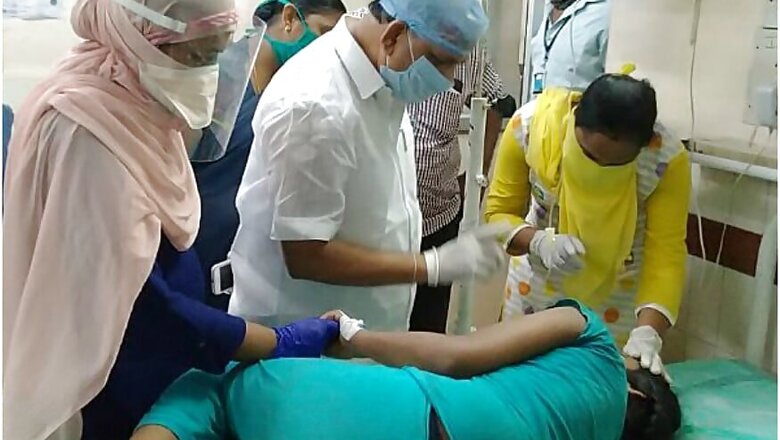
views
The chances of long-term health effects because of exposure to styrene vapour, which leaked from a chemical plant in Andhra Pradesh's Visakhapatnam, are less and illnesses caused by the gas is not universally fatal, AIIMS Director Dr Randeep Guleria said on Thursday.
As far as treatment is concerned, there is no specific antidote or a definite medicine for reversing the effect of this compound. The therapy remains mainly supportive, he said.
Eleven people have died and 1,000 others exposed to styrene vapour that leaked from a chemical plant in Visakhapatnam in the early hours of Thursday and quickly spread to villages in a five-kilometre radius.
A large number of people have been admitted to hospital. Most of them are in a stable condition and hopefully will make a good recovery, Dr Guleria told reporters here.
To a question on wheather the impact of the exposure can be long-term as was in Bhopal gas tragedy, Dr Guleria said, "The gas doesn't stay for a very long time. The chances of long-term impact is less as the compound metabolises and leaves the body quickly."
"This is an acute exposure rather than a chronic exposure. But we will have to follow up and see. As of now, the data doesn't suggest any significant long-term effect."
Those who have had a very close exposure, are the ones with a higher chance of experiencing severe effects, he said, adding a house-to-house visit in the surrounding areas have been initiated to see if anybody has developed medical problems.
Guleria said inhalation and ingestion of styrene can cause effect the skin and the eyes.
Absorption of this compound can affect the central nervous system causing headache, nausea, vomiting and fatigue. People become unsteady, have difficulty in walking and sometimes also can fall over. High exposure can lead to coma, pulmonary edema and irregular heart beat, he said, adding the syndrome is known as styrene sickness.
Effect on skin is usually mild in form of irritation, itching and some degree of dermatitis. It causes irritation in the airways and depending on the degree of the exposure the effect can be much higher, the AIIMS director said.
He said the first thing that has to be done is to remove individuals from the affected area, as has been done aggressively.
Eyes need to be washed with water. Tissues or towel can used to clean the deposition in the skin, Dr Guleria said, "Individuals have to be monitored for any breathing difficulty or drowsiness because the compound can affect the lungs and the brain."
"The main treatment strategy is to watch out for any breathing difficulty and airway management. Some of these patients will be required to be incubated and put on ventilator. Many will just require oxygen therapy and can be monitored in terms of their oxygen requirement, respiratory rate and their CNS depression," he said.
At a press briefing, Director General of National Disaster Response Force (NDRF) S N Pradhan said leakage from the factory is now minimal but the force's personnel will be at the spot till it is totally plugged.
Pradhan said 500 people belonging to 200-250 families living in 3-km radius have been moved to safer places.
Member of the National Disaster Management Authority Kamal Kishore said about 1,000 people living in nearby areas of the factory have been exposed to the gas leak.




















Comments
0 comment